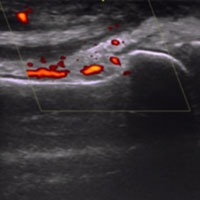Original Articles
Vol. 72 No. 3 (2020)
Hand dominance in early and established rheumatoid arthritis: evaluation by dynamometer, Ritchie index and musculoskeletal ultrasound: a cross sectional study

Publisher's note
All claims expressed in this article are solely those of the authors and do not necessarily represent those of their affiliated organizations, or those of the publisher, the editors and the reviewers. Any product that may be evaluated in this article or claim that may be made by its manufacturer is not guaranteed or endorsed by the publisher.
All claims expressed in this article are solely those of the authors and do not necessarily represent those of their affiliated organizations, or those of the publisher, the editors and the reviewers. Any product that may be evaluated in this article or claim that may be made by its manufacturer is not guaranteed or endorsed by the publisher.
Received: 5 February 2020
Accepted: 31 August 2020
Accepted: 31 August 2020
1537
Views
866
Downloads











